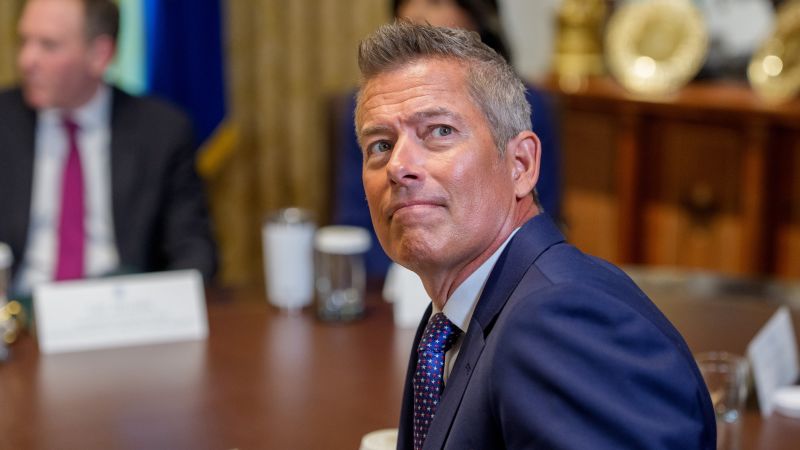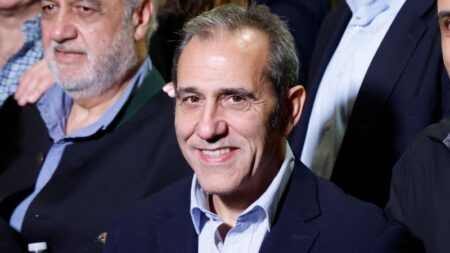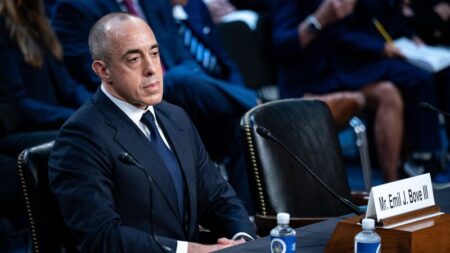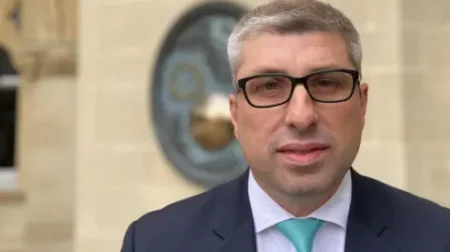On Wednesday, President Donald Trump made a noteworthy announcement regarding the leadership of NASA, directing Transportation Secretary Sean Duffy to take on the role of interim NASA administrator. This sudden leadership change comes as the Trump administration seeks to reshape the agency during what many view as a crucial point in its history. The move aims to bring Duffy’s management style and expertise in transportation to the forefront of aerospace endeavors, especially as space exploration and technology continue to advance rapidly.
In a post shared on Truth Social, the president praised Duffy’s performance in overseeing transportation affairs, stating that he has done an “exceptional job” in modernizing the nation’s air traffic control systems, alongside efforts to improve and beautify roads and bridges across the country. Trump expressed his confidence in Duffy’s capability, suggesting that his leadership would be particularly beneficial for NASA, even if only for a brief duration. This decision further emphasizes the importance the administration places on effective leadership in government agencies tasked with critical national interests.
Following the president’s announcement, Sean Duffy responded to the news on X (formerly known as Twitter), expressing his gratitude and enthusiasm for the new role. “Honored to accept this mission. Time to take over space. Let’s launch,” Duffy tweeted, signaling his readiness to embrace the challenges that accompany leading NASA, an agency already pivotal in global space exploration initiatives. His comments reflect an eagerness to innovate and advocate for advancements within the space sector, reinforcing the administration’s narrative of renewed American agency in space.
The appointment comes in the wake of a contentious period for NASA, particularly following President Trump’s rescinded nomination of tech billionaire Jared Isaacman to lead the agency. Isaacman, known for his close ties to Elon Musk, founder of SpaceX, had previously garnered significant attention for his achievements in the private space sector. However, Trump’s decision to withdraw Isaacman’s nomination stemmed from concerns regarding potential conflicts of interest and the implications of having a close ally of Musk—a prominent figure in the space industry—at the helm of NASA.
In a lengthy social media post reflecting on Isaacman’s nomination, President Trump voiced his apprehensions, underscoring his belief that it would be “inappropriate” for someone so closely linked to Musk to manage NASA’s operations. He noted the significant role that NASA plays in the corporate landscape that Musk has cultivated, suggesting that such affiliations could impede the agency’s impartiality and effectiveness. This admission reflects the complexities of intertwining public service with private business interests, a dynamic that has frequently stirred debate within the realms of politics and industry.
Notably, the relationship between Musk and Duffy has not been without its tensions. Reports indicate that the two engaged in a heated exchange during a cabinet meeting in March, with Duffy accusing Musk of attempts to undermine the integrity of air traffic control by allegedly attempting to dismiss controllers. Such conflicts showcase the intricate relationships that exist between the Department of Transportation and the ever-expanding aerospace industry, highlighting the potential for competing interests and priorities to emerge.
In conclusion, President Trump’s appointment of Sean Duffy as interim NASA administrator marks an ambitious pivot in agency leadership, aimed at unifying the transportation and aerospace sectors under a vision of American excellence in space. However, it also illustrates the complexities and challenges that accompany governmental administration in an era where private enterprises exert substantial influence over national space policy. With Duffy at the helm, many will be watching closely to see how he navigates the intricacies of leading NASA while simultaneously grappling with the expectations set by both the president and the public.










